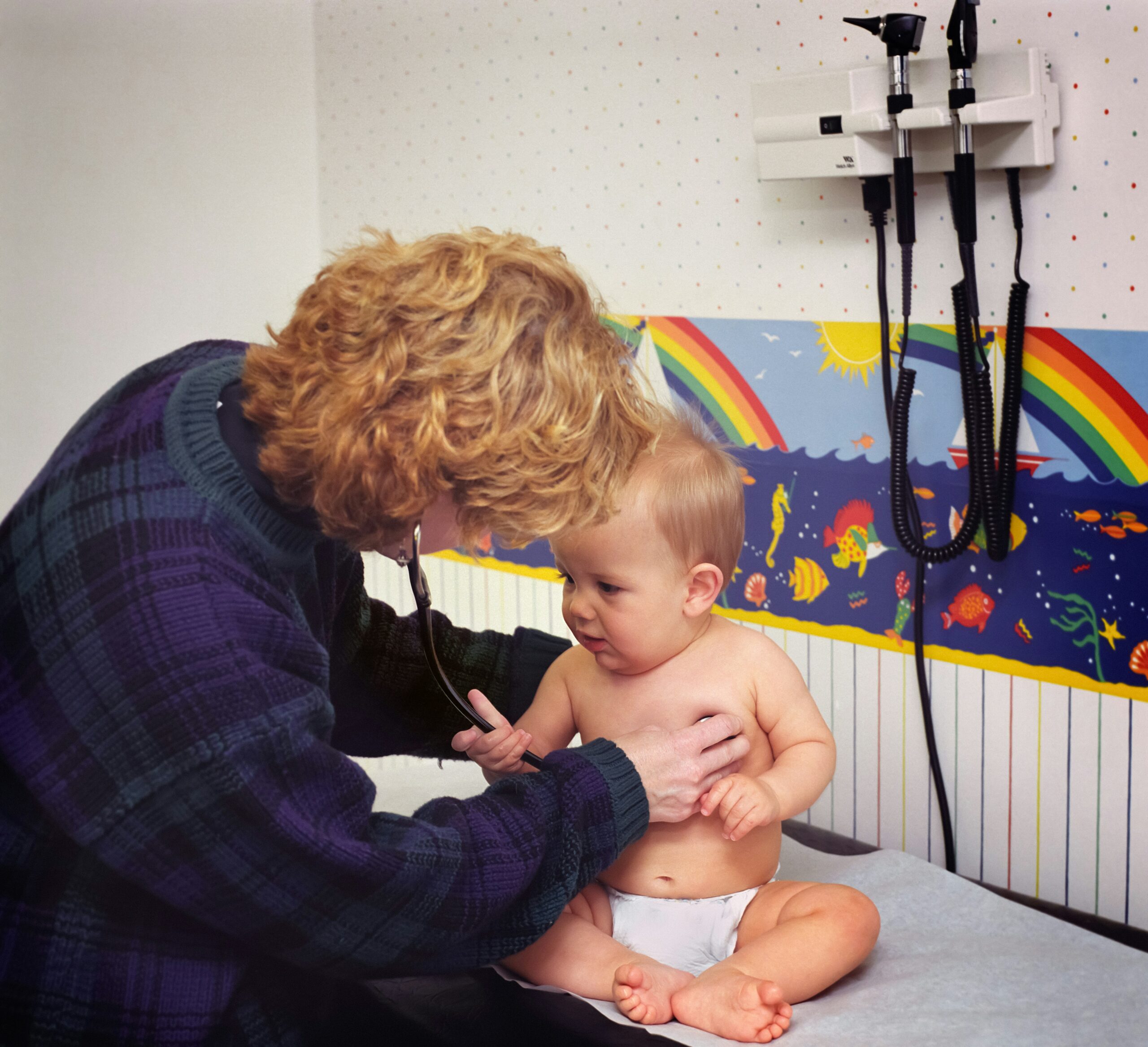Daily life as a parent is filled with questions—some fleeting, others that echo late into the night. A sudden fever. Whether a picky eater is “just a phase”. Uncertainties about that persistent cough or unexplained rash. In the swirl of decisions, one figure quietly emerges: the pediatrician. Far more than an occasional consultant, the pediatrician often becomes a trusted partner, a steady presence through a child’s endless parade of “firsts” and challenges. Should a lingering cough prompt concern? Can an irregular growth pattern indicate something more? What if you simply crave reassurance while navigating daily routines? The reassurance—and scientific clarity—a pediatrician offers can transform uncertainty into confidence. Throughout, you’ll discover the breadth of the pediatrician’s role, why specialized care matters, how collaborative support shapes your child’s journey, and the many faces of pediatric expertise. Here’s a comprehensive look at how pediatricians support families from day one and why this relationship can make the difference in your child’s health and happiness.
The Pediatrician’s Role: From Newborn Exams to Adolescence
Pediatrician: A Core Partner in Health
At its essence, a pediatrician is not just a “kid doctor.” Trained extensively in the unique physiology of infants, toddlers, school-aged children, and teens, pediatricians adapt their approach at each stage of development. Growth is not linear. Sleep patterns evolve. Emotional and cognitive skills blossom—sometimes unevenly, sometimes in a rush. Pediatricians observe these nuances, drawing on a combination of diagnosis, developmental screening, and targeted interventions. Their toolkit covers acute infections—gastroenteritis, bronchiolitis, otitis media—as well as chronic conditions such as asthma or atopic dermatitis. With each checkup, they monitor milestones, track behavioral evolution, and translate scientific research into everyday advice.
More Than Medical Care: Support, Prevention, and Education
Why consult a pediatrician for everyday worries? Beyond treating illnesses, pediatricians provide preventive care—a blend of immunizations, nutritional guidance, and monitoring emotional wellbeing. Structured visits (well-child checks) start soon after birth: weight, height, and head circumference plotted on growth charts inform early detection of underlying issues. These appointments are a cocoon for questions: Is my baby eating enough? Why hasn’t my child spoken yet? Are tantrums a sign of something deeper? With empathy and clinical acumen, pediatricians offer explanations, balancing evidence with patience.
Vaccination? Absolutely essential—yet often the subject of parental anxiety. Pediatricians explain not only timing and necessity but also risks and adverse reactions, grounding each recommendation in international guidelines. Their role as educators soothes worries and fosters informed choices.
Pediatrician Versus Family Doctor: Understanding the Distinction
What sets a pediatrician apart from a general practitioner? Specialization. While family doctors manage a spectrum of age groups and conditions, pediatricians undergo years of focused training—with detailed study in developmental pediatrics, interpretation of subtle symptoms, and age-appropriate communication. Imagine a 3-month-old with failure to thrive, or a school-aged child showing learning difficulties: the pediatrician’s sharp eye for detail, reliance on growth monitoring, and nuanced perspective ensure prompt, accurate intervention. General practitioners remain key for basic health needs, while pediatricians step in for more intricate developmental issues, atypical symptoms, or when a parent seeks extra reassurance.
Communication and Holistic Assessment
Skill with stethoscopes and prescriptions is only the beginning. Pediatricians cultivate rapport—with both anxious parents and hesitant children. They adjust explanations, using playful analogies or direct, soothing language, dismantling the perceived barrier between “doctor” and “family ally.” Mental health, breastfeeding, sleep, accident prevention: each topic receives space and validation. The most effective pediatrician recognizes that behind every query is a family seeking clarity and connection.
The Pediatrician’s Training and Pathways
Academic Rigor and Pediatric Subspecialties
Becoming a pediatrician is a marathon. After medical school, pediatricians complete rigorous internships and clinical rotations—hundreds of hours immersed in neonatal resuscitation, respiratory distress, emergency management, and chronic disease care. This depth shapes their intuition and judgment. Many then pursue advanced fellowships in areas like neonatology, pediatric cardiology, endocrinology (addressing hormone imbalances and disorders such as diabetes), or child psychiatry (diagnosing and supporting emotional and behavioral disruptions such as anxiety or autism spectrum disorders).
Others gravitate toward public health research or crafting new clinical guidelines, contributing to the larger medical community and refining standards of care. An important note: increasingly, women comprise a majority of pediatricians—infusing the field with fresh perspective, commitment to listening, and innovative care philosophies.
Where Pediatricians Work: Diversity in Settings
Clinics, Hospitals, Maternity Wards, and Virtual Care
Pediatricians don many hats, seamlessly shifting across environments:
- Private practices anchor long-term follow-up and preventive care.
- Hospitals handle urgent, high-complexity illnesses, surgical referrals, and neonatal care (vital for vulnerable newborns).
- Maternity units rely on pediatricians for immediate new baby assessments—screening for congenital issues, guiding parents through first feedings, and navigating early family transitions.
- Community health centers focus on accessibility, outreach, and structured vaccination programs.
And then, modernity enters: telemedicine. Virtual consultations allow for medication adjustments, routine developmental checks, and advice when travel is daunting—though nothing replaces an in-person examination for infants with fever, dehydration, or ambiguous symptoms.
Hospital Subspecialty Services
Children facing rare conditions—metabolic diseases, congenital heart defects, challenging epilepsies—may be referred to specialized pediatric units. Here, pediatricians coordinate with nutritionists, speech therapists, geneticists, and psychologists, weaving a net of support that addresses the whole child beyond isolated symptoms.
Key Responsibilities: A Dynamic and Multifaceted Practice
Monitoring, Screening, and Early Detection
Routine does not mean unremarkable. At every checkup, pediatricians assess developmental milestones, fine-motor skills, expressive language, and social behavior. They administer vision and hearing tests or recommend pediatric audiology evaluations where needed. Growth curves expose potential thyroid dysfunction, malnutrition, or underlying chronic conditions. Quick referral—based on keen observation—can transform prognosis.
Real-Life Dilemmas: Nutrition, Sleep, Hygiene
From “Should I switch to formula?” to “How do I tackle night terrors?” Pediatricians sidestep dogma, listening to each family’s rhythms. Menu planning, allergy risk, safe sleep guidelines, oral hygiene, bowel habits—no subject is taboo. Evidence and empathy walk hand in hand, with room for diversity and adaptation.
Vaccination Schedules and Health Promotion
Immunizations save lives, yet confusion can cloud parental choices. Pediatricians demystify the immunization schedule, offer clarity on side effects, and address doubts without patronizing. Discussing emerging diseases (measles outbreaks, new viral strains) transforms worries into action plans, always guided by scientific evidence.
Diagnosis and Chronic Disease Coordination
When illness strikes—be it a GI bug, bronchitis, or suspected allergy—pediatricians apply rapid diagnostic skills. For chronic issues (asthma, diabetes, eczema), they anchor multidisciplinary care: arranging pulmonary function testing, dietary follow-up, dermatology consults, or teaching families long-term management strategies. Ongoing reevaluation ensures that care evolves as the child grows and their needs shift.
Psychological Wellbeing and Social Health
Behavioral changes, school difficulties, or emotional withdrawal trigger another layer of vigilance. Pediatricians gently probe, screen for signs of anxiety or developmental disorders, and link families to child psychiatry or therapy as needed. They advocate for open communication and foster resilience—acknowledging the stresses modern families face.
When to See the Pediatrician: Schedules, Red Flags, and Judgement Calls
Structured Visits and Individual Signals
After the initial maternity visit, pediatricians typically recommend monthly checkups during infancy, then every three months until age two, followed by yearly reviews—unless additional concerns arise. What about in-between? Certain signals always merit prompt attention:
- High fever unresponsive to antipyretics
- Persistent cough or respiratory difficulty
- Unexplained vomiting or diarrhea
- Noticeable weight loss
- Convulsions or repeated falls
- Delays in speech, walking, or social interaction
Trust your instincts—asking questions fosters early intervention, not unnecessary anxiety.
Choosing a Pediatrician: What Matters Most?
Availability, warmth, genuine listening, and clear communication are the pillars of a supportive relationship. Some prioritize proximity or the option for telemedicine; others seek continuity from infancy through adolescence. Reputation counts—but trust and comfort are irreplaceable.
Pediatrician or General Practitioner?
Not every rash, sniffle, or bruise necessitates a pediatric consult. For routine ailments, a family doctor can offer guidance, referring to a pediatrician when uncertainties persist or problems grow complex. Open communication—via shared health records—reduces duplication and ensures coherent care.
Building Trust and Coordinated Support
The Art of Partnership
Reluctant toddler, worried parent, or adolescent seeking autonomy—each scenario tests a pediatrician’s ability to build bridges. Honest, open dialogue is foundational; every worry deserves validation. Through educational resources, ongoing feedback, and an unwavering presence, pediatricians empower families to actively shape health outcomes.
Medical Records as Communication Tools
That health booklet? It’s more than administrative paperwork. Each entry (weight, height, vaccination, diagnosis) weaves a timeline—accessible to every professional involved in the child’s trajectory, ensuring nothing slips through the cracks.
Networks: Multidisciplinary Collaboration
Pediatricians rarely work in isolation. From occupational therapists to surgeons, collaboration means more informed decisions, fewer fragmented referrals, and smoother pathways for families facing multiple challenges. Community outreach and hospital case conferences strengthen these connections.
Pediatric Subspecialties, Innovation, and Evolving Family Needs
The Spectrum of Pediatric Specialties
As science advances, pediatric specialties have flourished. Neonatology, pulmonology, nephrology, rheumatology, pediatric gastroenterology—each area demands up-to-date expertise and sensitivity to family dynamics. Complex cases rarely remain in one lane. Regular communication, shared decision-making, and access to tailored therapies improve not only health outcomes but quality of life.
Mental Health, Complementary Approaches, and the Digital Shift
Mental health, once marginalized, now stands front and center. Pediatricians screen for anxiety, depression, learning disorders, and behavioral issues, referring to child psychiatry when indicated. Some families inquire about complementary approaches—pediatric osteopathy, homeopathy. Pediatricians respond by balancing current scientific knowledge with open-minded dialogue, guiding families through pros, cons, and evidence, without dismissing their preferences.
Digital evolution cannot be ignored. Telemedicine, e-learning platforms for parents, and electronic medical records enhance accessibility—but the irreplaceable value of human connection remains, especially in delicate conversations or complex diagnoses.
Contemporary Challenges
The landscape is shifting: workforce shortages, emerging diseases, the growing prevalence of obesity and allergies, rising expectations regarding access and convenience. Pediatricians adapt daily—researching, innovating, and advocating for better resources while placing children’s needs above all.
Key Takeaways
- The pediatrician is far more than a doctor; they are a guide, educator, and advocate for your child’s total wellbeing from birth through adolescence.
- Specialized knowledge allows for nuanced, age-specific diagnosis, monitoring, and personalized family support.
- Regular checkups, developmental screening, and preventive care form a safety net, detecting concerns early and keeping children on a healthy path.
- Pediatricians collaborate within flexible settings—private practice, hospitals, telemedicine—and lead multidisciplinary networks for complex cases.
- Scientific foundations, clear communication, respect for individual family choices, and continued adaptation to new health challenges make pediatricians a cornerstone of pediatric healthcare.
- For extra reassurance, practical tools, and tailored advice, families can benefit from digital innovations like the Heloa app, which offers personalized guidance and free health questionnaires to keep every parent one step ahead.
There are always resources and passionate professionals ready to accompany you—so your child’s journey is marked by both security and joy.
Questions Parents Ask
What is the difference between a pediatrician and a neonatologist?
A pediatrician takes care of children from birth through adolescence, handling everything from routine checkups to common childhood illnesses and developmental support. A neonatologist, on the other hand, is a pediatrician with advanced training in caring for newborns who are premature, have low birth weight, or face complex medical challenges just after birth. If your baby needs specialized care right after delivery, a neonatologist will often step in, working closely with the pediatrician to make sure your child receives the support they need during these first important days.
What are common reasons to see a pediatrician besides illness?
Seeing a pediatrician isn’t only about treating sickness. Many parents consult pediatricians for advice about sleep patterns, nutrition, growth, and general development. Routine visits are a chance to discuss feeding concerns, sleep challenges, behavioral changes, or questions about vaccines. Pediatricians also help with early detection of vision or hearing issues, provide guidance on injury prevention, and offer reassurance about milestones—so feel free to ask about anything, even if it seems minor. Your concerns are valid, and every question contributes to your child’s wellbeing.
When should I switch from a pediatrician to a general practitioner for my child?
Most pediatricians care for children until they reach their late teens, sometimes up to 18 or even 21 years old. The transition often depends on your child’s specific health needs and comfort level. If your adolescent is healthy and feels ready, you can gradually move care to a general practitioner as they approach adulthood. There’s no strict rule—what matters most is ensuring your child feels understood, supported, and confident as they grow. N’hésitez pas to talk about this transition with your pediatrician—they will guide you to make the change smoothly when the time is right.








